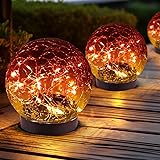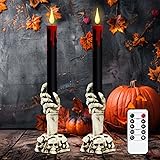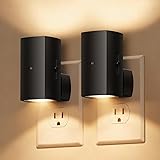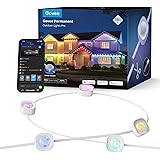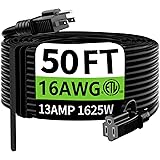The ingenuity involved in transforming everyday objects into something new is truly captivating. Many individuals are drawn to the art of upcycling, seeking creative ways to give discarded items a second life. However, certain materials present unique challenges. Consider the common light bulb, for instance. Its delicate glass structure and sealed design make it seem like an impossible candidate for repurposing, especially if one wishes to cut a light bulb without causing irreparable damage. Yet, as the accompanying video resource visually demonstrates, a careful and methodical approach can indeed allow you to open a light bulb successfully, unlocking a world of creative possibilities.
This process of safely dismantling a light bulb is not merely a party trick; instead, it is a foundational skill for various DIY projects and artistic endeavors. The ability to access the interior of these glass enclosures permits their transformation into everything from miniature terrariums to unique decorative items. Understanding the proper techniques and prioritizing safety are paramount to achieving a clean cut and preserving the bulb’s structural integrity, thus ensuring your DIY light bulb projects can flourish without unexpected setbacks.
Prioritizing Safety When Attempting to Cut a Light Bulb
Before any tools are even considered for a project involving glass, establishing a comprehensive safety protocol is non-negotiable. Working with glass, particularly thin and brittle glass like that found in a light bulb, carries inherent risks. Shattering is a constant possibility, and even a clean cut can leave incredibly sharp edges. Therefore, vigilance and proper protection are essential steps in the process.
Imagine if, during a moment of distraction, a piece of glass were to splinter and fly towards your eyes. Such an occurrence underscores the critical importance of wearing appropriate personal protective equipment (PPE). Safety glasses, often clear and wraparound, provide a barrier against flying fragments. Similarly, robust work gloves, ideally cut-resistant, will protect your hands from sharp edges and accidental slippage. It is also advisable to work on a stable, non-slip surface that can be easily cleaned. Laying down a thick cloth or a newspaper layer can help contain any glass shards and simplify cleanup.
Furthermore, understanding the type of light bulb you are working with contributes significantly to safety. Traditional incandescent bulbs are generally the safest for this type of modification because they contain only a vacuum or inert gases. Compact fluorescent light (CFL) bulbs and LED bulbs, conversely, contain internal electronics and sometimes harmful chemicals (like mercury vapor in CFLs) that make them unsuitable for opening. Always ensure you are working with the correct type of bulb to minimize any potential health hazards or technical complications.
Essential Tools for Opening a Light Bulb Safely
The success of cutting a light bulb without breaking it often hinges on selecting and utilizing the correct tools. While the video above provides a visual guide, a deeper understanding of each tool’s function can enhance your technique and overall results. Precision and control are key when dealing with such delicate materials.
Typically, the primary tool for initiating the cut is a small, specialized glass cutter. These are distinct from larger cutters used for sheet glass; often, they feature a small carbide wheel designed for scoring fine lines. Accompanying this, a pair of needle-nose pliers or small, blunt-nosed pliers are invaluable for carefully chipping away the scored glass or gently prying apart the opening. A diamond-tipped file can also be employed to smooth any sharp edges after the initial opening has been made. Additionally, a steady hand and a calm demeanor are psychological “tools” that prevent hurried, careless movements.
Consider the role of lubrication in this process. Some enthusiasts find that applying a small amount of cutting oil or even water to the scoring line can help achieve a cleaner, smoother score. This reduces friction and can prevent the glass from splintering unevenly. Having a small brush or a soft cloth nearby is also beneficial for carefully clearing away any dust or small glass particles that accumulate during the process, ensuring a clear view of your work. Each of these tools, when used correctly, contributes to a more controlled and less frustrating experience, allowing for the meticulous execution required to safely open a light bulb.
Step-by-Step Approach to Safely Open a Light Bulb
Achieving a clean opening in a light bulb requires a series of precise and gentle actions. While the visual demonstration is instructive, a detailed breakdown of each phase ensures clarity, particularly for those new to this delicate craft. Follow these steps meticulously to increase your chances of success.
1. Preparation and Setup
- **Workspace:** Select a well-lit, stable work surface. Place a protective layer, such as a thick cloth or several sheets of newspaper, to catch glass shards and prevent damage to your table.
- **Safety Gear:** Don your safety glasses and cut-resistant gloves. This is a non-negotiable step.
- **Bulb Selection:** Ensure you are using an incandescent light bulb. Avoid CFLs and LEDs due to their internal components.
2. Scoring the Bulb
The initial score is the most critical part of the process. This score will define where the bulb will ultimately separate.
- **Identify the Neck:** Focus on the metal base of the bulb. The goal is often to remove this entire metal and ceramic assembly. Locate the seam where the glass globe meets the metal base. This is the ideal area for your score line.
- **Apply the Glass Cutter:** With light, consistent pressure, use your glass cutter to score a continuous line around the circumference of the bulb’s glass globe, just above the metal base. The aim is not to cut deep but to create a ‘scratch’ line.
- **Even Pressure:** Maintain an even pressure and a steady hand. Avoid pressing too hard, as this can cause cracking. A single, uninterrupted score is generally more effective than multiple passes. You should hear a faint “shhh” sound as the cutter moves across the glass.
3. Initiating the Break
Once scored, the glass needs to be encouraged to separate along that line. This requires finesse rather than force.
- **Gentle Pressure:** With your needle-nose pliers, begin gently applying slight pressure along the scored line. This might involve carefully wiggling the metal base or gently tapping the scored line with a small, light object.
- **Gradual Chipping (Optional but common):** Alternatively, you can use the pliers to gently chip away small fragments of glass directly from the scored line. Start from one point and work your way around, removing tiny pieces at a time. This is a common method shown in many visual guides, allowing for controlled removal of the metal base and its surrounding glass.
- **Patience is Key:** This stage demands significant patience. Rushing will almost certainly result in the glass cracking or shattering unevenly. The goal is to encourage the glass to ‘break’ along the weakened score line.
4. Cleaning and Finishing
After the initial separation, some refinement may be necessary.
- **Smooth Edges:** Once the metal base and associated glass are removed, inspect the newly opened rim of the light bulb. It will likely be sharp. Use a diamond-tipped file or sandpaper (fine grit) to carefully smooth down the edges. This makes the bulb safe to handle and work with for your subsequent light bulb craft projects.
- **Clear Debris:** Carefully brush away any remaining glass dust or shards into a waste container. Dispose of glass safely.
By adhering to these detailed instructions, the seemingly daunting task of opening a delicate light bulb becomes a manageable and rewarding endeavor. The meticulous nature of this process ensures that the finished, open bulb is ready for its next life as a creative vessel.
Creative Uses for Your Newly Opened Light Bulbs
Once you have successfully mastered the technique to open a light bulb, a world of creative possibilities unfolds. These small, clear glass vessels, once destined for the rubbish bin, can be repurposed into charming and unique items for home decor, gifts, or even educational displays. The translucent nature of the glass allows light to play beautifully, making them ideal for various applications.
One of the most popular transformations is creating miniature terrariums. Imagine a tiny, self-sustaining ecosystem encapsulated within a glass bulb, complete with moss, small ferns, and perhaps even a miniature figurine. These “bulb-terrariums” add a whimsical touch to any desk or shelf. Similarly, these open bulbs can serve as unique mini-vases for a single delicate flower or a small sprig of greenery, bringing a touch of nature indoors in an unexpected way. They are particularly striking when arranged in clusters or hung from threads as suspended botanical displays.
Beyond botanical applications, consider using them as decorative ornaments. Filled with colorful beads, glitter, fairy lights, or even tiny paper cranes, they can become eye-catching additions to holiday decor or year-round accents. For a more scientific bent, an opened light bulb could be used to demonstrate the principle of a vacuum (if re-sealed with appropriate equipment) or to house small, non-flammable chemical reactions under controlled conditions. The potential for light bulb craft is truly limited only by one’s imagination, providing a sustainable and artistic outlet for repurposing everyday objects into extraordinary creations.


